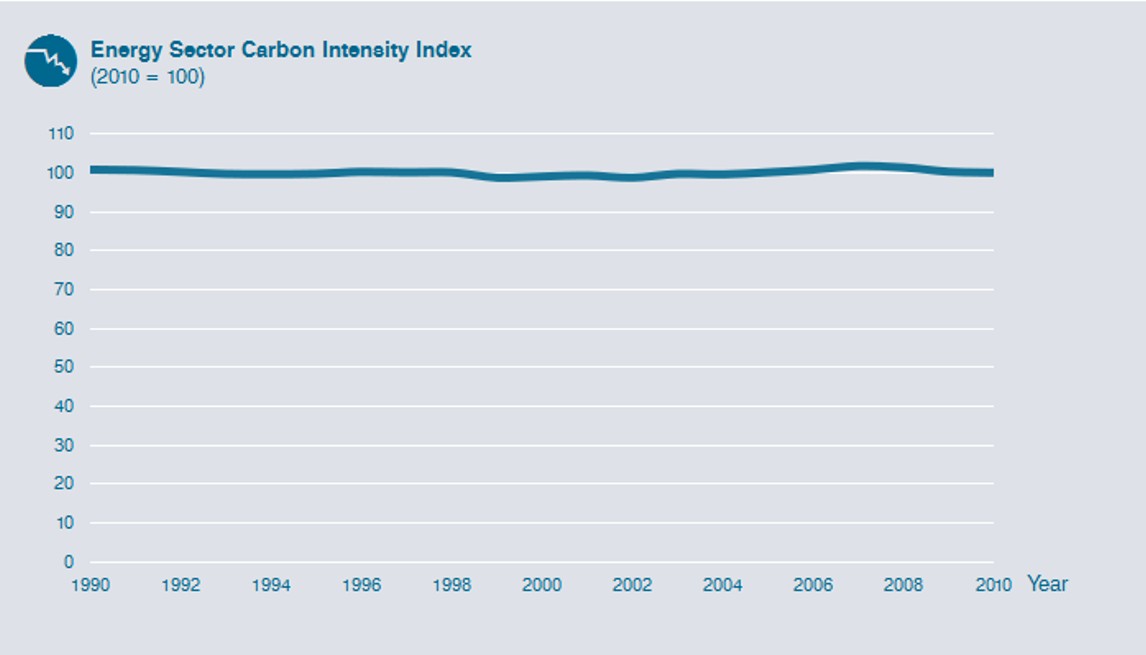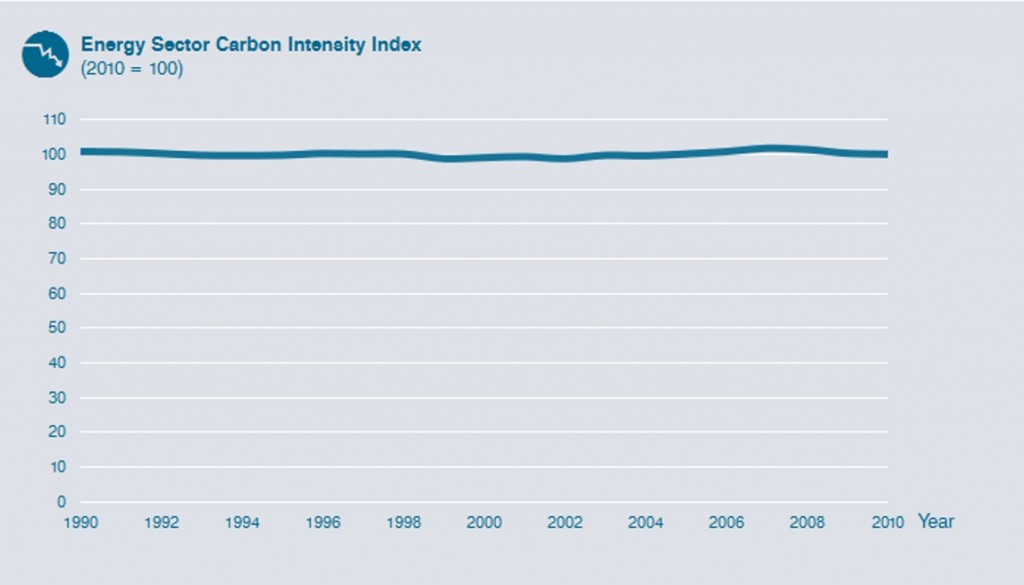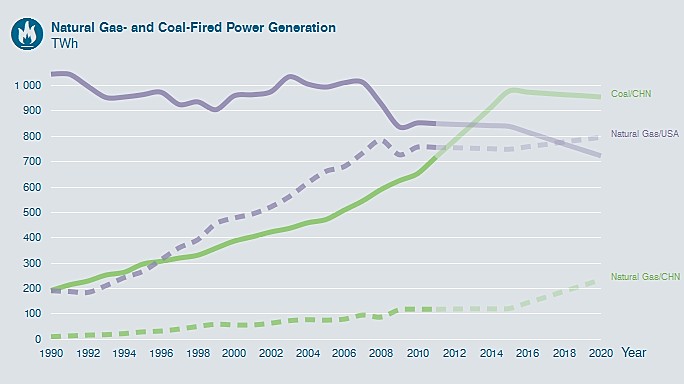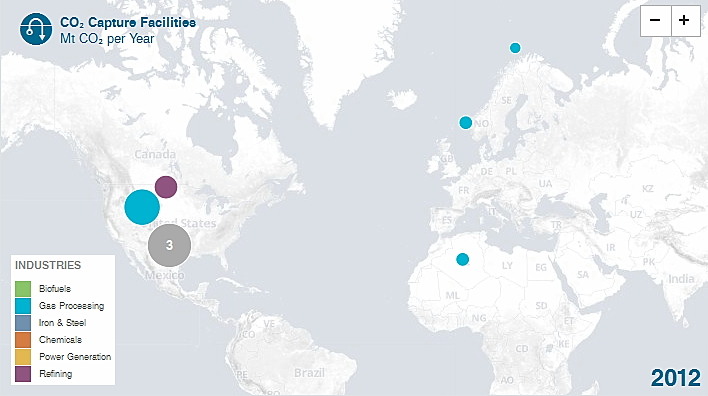The International Energy Agency announced in a new report that despite the growth of solar and wind power, coal power continues to add more capacity than either. It would seem in light of the evidence that we humans would be smart enough to recognize that burning more coal has consequences. But no! Not us! Instead we continue to prime the atmospheric pump as indicated by the Energy Sector Carbon Intensity Index (ESCII) (seen in the graph below). It shows the amount of CO2 we produce per generated unit of energy, and in 1990 ESCII was 2.39 tons of CO2 per ton of oil equivalent and in 2010 the number had diminished only slightly to 2.37 tons. That means an average unit of energy produced today is .02 tons less dirty than what we produced in 20 years ago. And we are producing many more units of energy. So in effect with with rising energy demand we are pumping out far more CO2 than in 1990.
So why is coal still growing globally? Because it is accessible, cheap and easy to incorporate into existing power infrastructure and grids. For the renewables like for wind, solar, and tidal that is not the case. Often wind farms are located far from where the energy is consumed which means new infrastructure builds and additional costs. So although China led the world in deploying wind in 2011, at the same time the country opened as many coal-fired power plants as currently exist in the states of Texas and Ohio.
ESCII statistics describe intensification. For a real picture you need to understand the overall amount of energy being generated from coal. That’s why the graph below is a better representation of the current coal addiction in China (see the green solid line). China’s total coal generated energy output continues to rise and is not expected to reach peak until 2015.
That’s is another reason to reconsider measuring our carbon footprint through intensification. That’s what the Government of Canada does when it argues that the oil sands are less polluting today than a decade ago. It holds up intensification data showing a decline in water use and carbon output per barrel and doesn’t show you the sharp spike in total number of barrels of oil being produced. Now add to all of the above the paucity of carbon capture and sequestration (CCS) projects (see the map below) and we are witnessing human stupidity on a colossal scale.
What’s the remedy? Taxing carbon is one approach. Whether we do this as consumption (carbon tax) or production (carbon cap and trade) it may make all of us sit up and put a value on the CO2 we are pumping into the atmosphere. And if our governments take the money raised and funnel it into investment in alternative renewable energy production then at least we will be paying down our debt to the environment. It is far from a total cure for our rampant eagerness to generate more and more electricity by using carbon intensive fuel. But if we do this and in addition learn how to use a lot less energy per person maybe we can begin the long turn to ease the growth of CO2 in the atmosphere.
Right now there are just too many numbers trending up.
CO2 levels going up!
Coal consumption going up!
Global average temperatures going up!
Human population going up!
Let’s hope something that we are doing starts going down soon other than our national economies!












